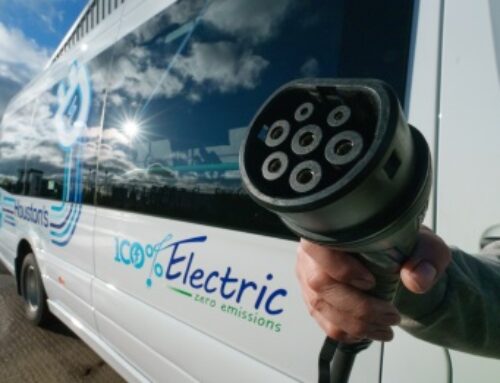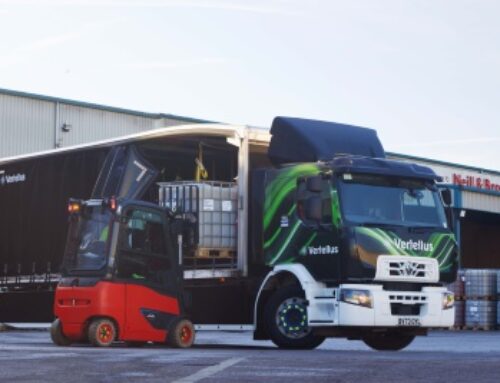A clean approach to workshop safety
Kärcher’s head of professional product, Dan Took, gives his recommendations on the best methods to tackle workshop floor cleaning
Various cleaning operations are required to keep a workshop in good order, especially when it comes to floors. Regular cleaning ensures that the workshop is safe and free of obstacles, preventing accidents, protecting human health and the environment, retaining the value of the flooring and promoting a positive impression of workshop conditions.
 Workshop floors require a different cleaning approach to showrooms or offices. It is important that a workshop floor is not only robust enough to prevent becoming immediately marked and dented, but also resistant to acid and alkalis as well as anti-slip to prevent accidents occurring if oil, grease and water are spilt.
Workshop floors require a different cleaning approach to showrooms or offices. It is important that a workshop floor is not only robust enough to prevent becoming immediately marked and dented, but also resistant to acid and alkalis as well as anti-slip to prevent accidents occurring if oil, grease and water are spilt.
Dusty floors can pose a major hazard, particularly where hard surfaces are concerned. Regular maintenance and deep cleaning will help retain the value of the flooring and prevent it wearing out more quickly.
Machine technology is essential for cleaning workshop floors. We would always recommend Kärcher scrubber dryers: as well as being significantly more efficient than manual cleaning, they ensure the floor is instantly dry and can be walked on immediately after cleaning with no health and safety risk.
Cleaning methods depend on the amount and type of dirt on the floor. Deep cleaning is required for heavily soiled work floors and in those situations, we would advocate a two-step method.
The first step would be to apply a cleaning solution with a higher concentration to the floor, and while the solution is reacting with the dirt, scrub the surface several times. For the second step, collect the loosened dirt in the scrubber dryer’s squeegee and then rinse the area with clean water.
Maintenance cleaning is sufficient for lightly soiled floors, and in this situation a one-step method is used. A cleaning solution is applied to the floor, after which the surface is scrubbed and the loosened dirt is vacuumed by the scrubber dryer, as part of the same process.
Choosing the right brush and/or pad material is essential for doing a thorough cleaning job. Roller brushes are best for tackling highly structured flooring, with deep and wide crevices. For closed, smooth surfaces, roller pads ensure maximum contact with the floor. The hardness of the brush or pad material depends on the amount and the type of dirt and how hard the floor surface is.
Stoneware tiles are the number one floor material used in workshops, as they meet the high requirements for this environment; however, there is one small disadvantage. When the tile is manufactured, a micro-pore structure is created that attracts dirt and gradually becomes grey and discoloured.
 To remove the dirt from these fine pores, two things are required: a powerful mechanism and microfibre technology; a mop will have limited effect. We have found that a roller scrubber head with a microfibre roller pad has proven particularly effective when conducting mechanical cleaning operations.
To remove the dirt from these fine pores, two things are required: a powerful mechanism and microfibre technology; a mop will have limited effect. We have found that a roller scrubber head with a microfibre roller pad has proven particularly effective when conducting mechanical cleaning operations.
Thanks to the strong contact pressure and the high rotational speed of the microfibre rollers, the dirt is removed from the floor’s surface structure and then immediately expelled from the microfibre material itself. As such, the microfibre roller maintains the same level of efficiency throughout the operation and restores the tile to its original appearance.
As with fine stone tiles, similar obstacles arise when cleaning ceramic flooring. However, the cleaning of ceramic tiles calls for the use of roller brushes with polypropylene bristles alongside the Kärcher cleaning agent R 69 ASF.
This cleaning agent is a powerful alkali-based gravel cleaner that quickly and safely dislodges grease, oil and brake dust and mineral soiling. Virtually no foam is created when collecting the loosened dirt, which means that the cleaning agent can also be absorbed along with the dirt.
The stable emulsion created through treating the floor with the roller brushes is demulsified in the dirty water tank by the ASF formula. In other words, small, extremely fine fat droplets in the dirt converge to create large fat droplets, thereby creating the necessary energy to separate the fat and grease from the water.
As a result, the separation system is not overburdened by the amount of dirt collected by the brushes.
When it comes to concrete screed, this has usually been colour-coordinated with the property via surface-coating measures such as epoxy resin coating or made slip-resistant by adding certain admixtures. A scrubber dryer with a roller scrubber head is most effective at cleaning surfaces of this kind.
All Kärcher cleaning agents have been developed according to certain considerations. These include low foaming, maximum cleaning performance with low dosage and contact time, biodegradable and rapid separation of oil from water in the dirty water collected. All agents have all been made to work with varying machines and with material compatibility in mind.
High pressure technology can be used to clean floors in congested areas and confined spaces, and this technology is usually already present on-site. A surface cleaner is an essential accessory to prevent the workshop’s fixtures and equipment from being covered in moisture.
A nozzle bar with angled self-propelling power nozzles rotates in the round casing and dislodges the dirt from the ground. This can be instantly diverted into the existing drain system or vacuumed using a wet/dry vacuum cleaner.
As the name suggests, the wet and dry vacuum cleaner is able to collect dry material such as brake dust as well as the occasional moisture and liquid. A class M or H safety vacuum cleaner should be used for vacuuming dust that is hazardous to health.











